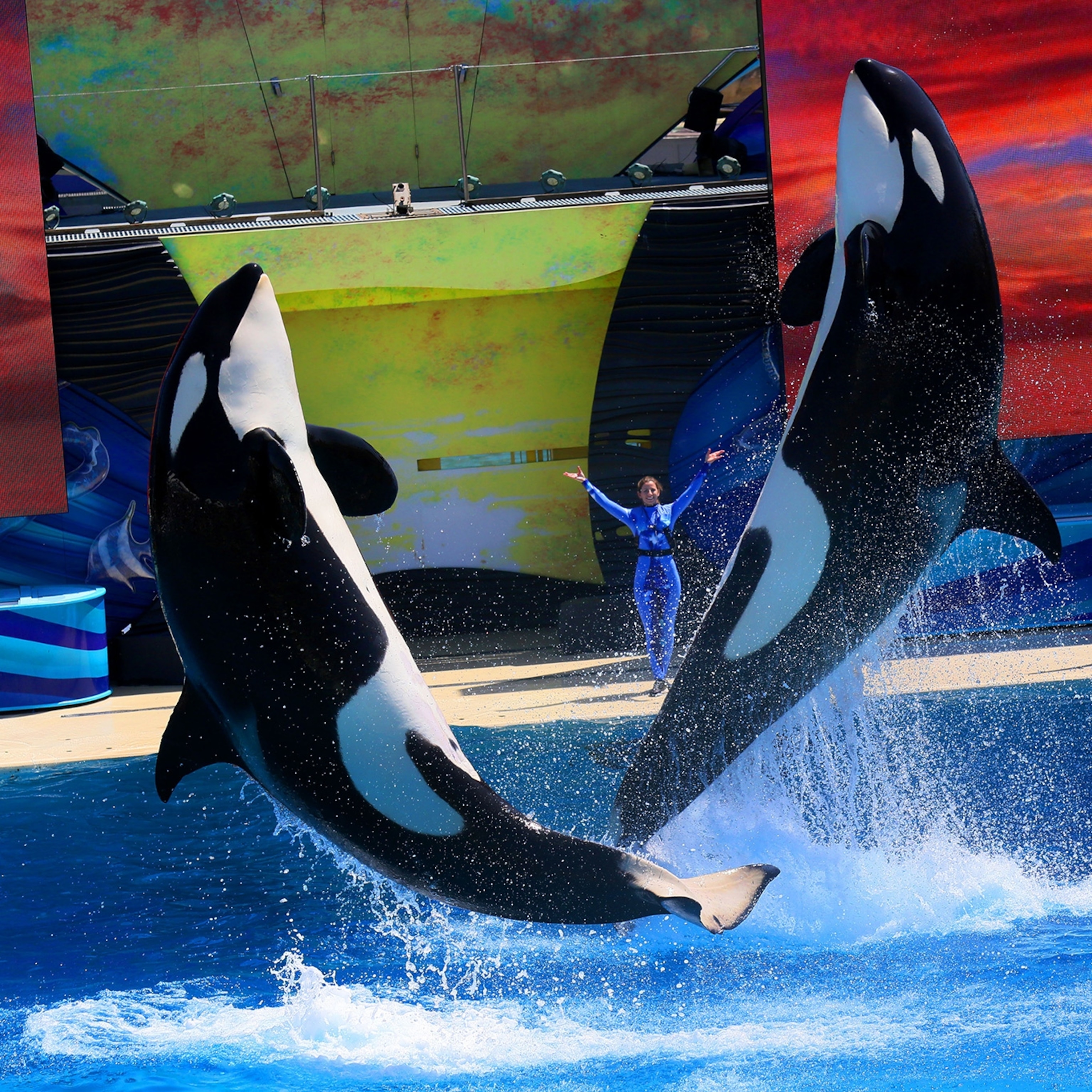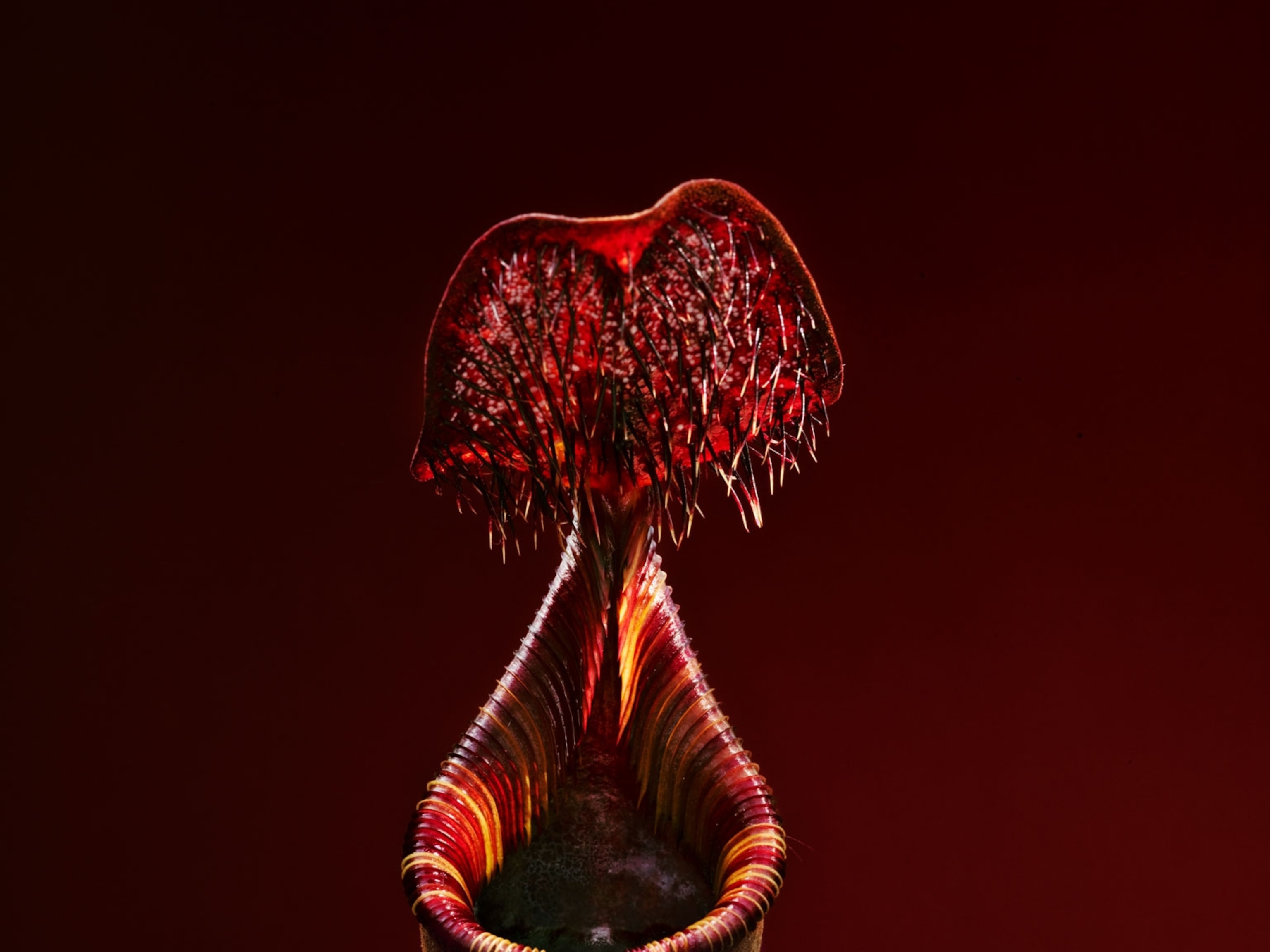
‘Dory’ Bred in Captivity for First Time
Breeding the popular blue tang in captivity is an important step toward protecting wild fish and reefs from destructive practices.
For biologist Kevin Barden, blue tangs are an obsession that began when he was five years old and came face-to-face with one at Boston's New England Aquarium. Now 29, he has played a leading role in cracking the code to successfully culturing the popular species.
Today, the University of Florida Tropical Aquaculture Lab, in conjunction with Rising Tide Conservation, announced that blue tangs—or Dory, as fans of the Disney movie will know—have been bred in captivity for the first time.
“This breakthrough has the potential to help reduce the overexploitation of the species and continue to address wildlife crime associated with cyanide use in the saltwater aquarium trade,” says biologist Andrew Rhyne, a winner of this year’s Wildlife Crime Tech Challenge, sponsored in part by National Geographic, for coming up with a way that allows better monitoring of the marine aquarium trade.
No one knows how many blue tangs are taken from coral reefs across the Indo-Pacific each year for saltwater aquariums. No one knows how much reef is damaged annually by destructive fishing practices—notably the use of cyanide to stun the fish and make them easier to catch—commonly associated with capturing blue tangs. No one knows the effects of Finding Dory on sales of blue tangs.
Blue tangs are commonly associated with destructive and illegal fishing techniques.
But the data that do exist suggest there’s reason for concern.
Every blue tang in an aquarium today originated from a reef, and according to some researchers and nongovernmental organizations, many of them have been collected illegally. A United States wildlife law known as the Lacey Act makes it illegal to import into the U.S. any blue tangs that were caught illegally in another country, but the trade lacks transparency, and most crime goes unnoticed.
The Problem With Wild-Caught Blue Tangs
Barden leans over a 700-gallon (2,650-liter) fiberglass tank in a humid greenhouse at the Tropical Aquaculture Lab in Ruskin, Florida. It's April 2016, and Barden, who specializes in the aquaculture of marine species, speaks passionately about the tank's occupants. His eyes follow the deep blue flashes and sleek glides of two adult Pacific blue tangs—the species that has occupied much of his professional life since 2012.
The blue tang is a popular, high-value aquarium species. Trade data show that out of nearly 2,300 saltwater aquarium fish species imported to the U.S., blue tangs have been ranked as high as the 10th most imported fish, thanks in part to their eye-catching colors and relative affordability. According to the Marine Aquarium Biodiversity and Trade Flow database, more than 130,000 blue tangs reached U.S. markets in 2009, and because the U.S. is generally assumed to represent around half of the global trade in aquarium fish, the total number of blue tangs reaching global markets likely exceeds a quarter of a million a year. This figure doesn't include fish that die early in the supply chain and therefore aren't counted in the best available trade data.
“The actual number of blue tangs harvested globally could be significantly higher,” Rhyne says. “It's simply impossible to know, given how data deficient the trade is.”
Because blue tangs have a high reproductive rate and extensive range, they're not in danger of extinction. Nonetheless, localized overfishing is a serious problem. Anecdotal reports of their disappearance locally in Indonesia, the largest source country, are well documented. While blue tangs were commonly harvested from reefs around Bali 20 years ago, today fishermen report having to go farther offshore to find them. In 2015, as much as a third of the blue tangs sourced from Indonesia originated in West Papua, a fishery that opened only in 2014. And because fishing began in West Papua without any baseline data on population numbers or reef health, the effects of harvest are unknown.
The saltwater aquarium trade deals largely in wild-caught fishes.
In addition to the aquarium trade's effects on blue tang populations, there's concern about the reefs they inhabit. Blue tangs are commonly—and perhaps disproportionately because of their preferred habitat—associated with destructive and illegal fishing techniques.
The most egregious is the use of cyanide to stun fish. When a fisherman squirts cyanide at a blue tang that has retreated into a coral head or crevice in the reef, that cyanide damages or kills the coral and other nearby invertebrates.
Although people in the aquarium trade have been talking about the cyanide problem for decades, its use—illegal in most countries—is still far too common in the Philippines and Indonesia, which account for more than 80 percent of saltwater aquarium fishes imported to the U.S. annually.
Cracking the Code
“We began working with blue tang in 2010,” says Judy St. Leger, president of Rising Tide Conservation, a U.S. nonprofit dedicated to coral reef conservation that helped fund the research. “They were one of several species Rising Tide stakeholders identified as being particularly good candidates for aquaculture because of collecting practice concerns, potential for good return on investment for commercial producers, and the general difficulty in rearing a species with such very small eggs.”
Breeding tropical reef fishes like blue tangs is far more challenging than breeding most freshwater fish, and this is one reason that the saltwater trade, unlike the freshwater aquarium trade, deals largely in wild-caught fishes.
Biologists working on reef fish aquaculture often refer to the challenges of breeding and rearing tropical reef fishes as “cracking the code.” Once the code is cracked for a species, it can be shared with those who have a commercial interest in breeding it.

At this point, roughly 14 percent of the nearly 2,300 species in the saltwater aquarium trade have been successfully bred and reared in captivity, but only about one percent are commonly available to aquarists as aquacultured animals. Because wild fishes are often so inexpensive, the cost of scaling up a successful commercial breeding program is an impediment to commercial-scale breeding.
Another reason for the low percentage of aquacultured saltwater aquarium fishes is the complexity of cracking the code. Getting the parent fish to spawn in captivity and produce eggs is only the first step. Blue tang eggs are broadcast into the water, where they begin a perilous journey lasting more than a month before they finally settle onto a reef.
Figuring out how to feed these larval fishes during this period is challenging, especially because their dramatic metamorphoses from larvae to juvenile fish requires specific kinds of food at each stage of development. Raising various species of tiny crustaceans and other zooplankton in sufficient quantities can be another whole code to crack.
‘Unknown Territory’
Barden was elated when he came into work on June 20 this year. There were hundreds of blue tang larvae in his larval rearing tank, and they were more developed than any he'd seen anywhere in captivity.
“We were officially entering unknown territory,” he says. He'd started with more than 50,000 eggs some 25 days before, and daily losses began to reduce those numbers substantially. “It was a complete roller-coaster ride, and I don't like roller coasters,” he says.
On the morning of July 4, Barden looked into the tank and saw a group of blue tangs near the bottom, which meant they had settled—a milestone in fish development that bodes well for their survival. A little more than a week later, the settled fish began to show some of the first tell-tale blue hues, becoming readily recognizable even to the untrained eye as “baby Dorys.” There is every reason to think those 27 will continue to grow. More important, Barden says, the code has been cracked. “The reality is whether we had one or 10,000 blue fish in the end, the result is the same. It signifies the maturation of our industry.”
The success of Rising Tide Conservation and the Tropical Aquaculture Lab has the potential to begin to turn the tide on illegal, unreported, and unregulated (IUU) fishing for aquarium fishes. As profitable, large-scale commercial aquaculture of the Banggai cardinalfish, another saltwater aquarium favorite, did for that species almost overnight, the widespread availability of captive-bred blue tangs could transform the species' trade.
Today aquacultured Banggai cardinalfish dominate the U.S. trade in large part because Petco and its supplier, Quality Marine, made a concerted effort to push aside short-term profits and promote change by pricing aquacultured Banggai competitively with wild-caught ones.
If the same happens with the blue tang, it has the potential to reduce or end localized overfishing and remove much of the incentive for fishing with cyanide. The result would be more robust, easier-to-keep blue tangs for aquariums, a rebound in wild populations, and far less reef damage.
Ret Talbot is a freelance writer covering fisheries at the intersection of science and sustainability. Follow him at the Good Catch Blog and on Facebook and Twitter, where he frequently uses the hashtag #DataMatter.
Read more stories about wildlife crime and exploitation on Wildlife Watch. Send tips, feedback, and story ideas to ngwildlife@natgeo.com.








